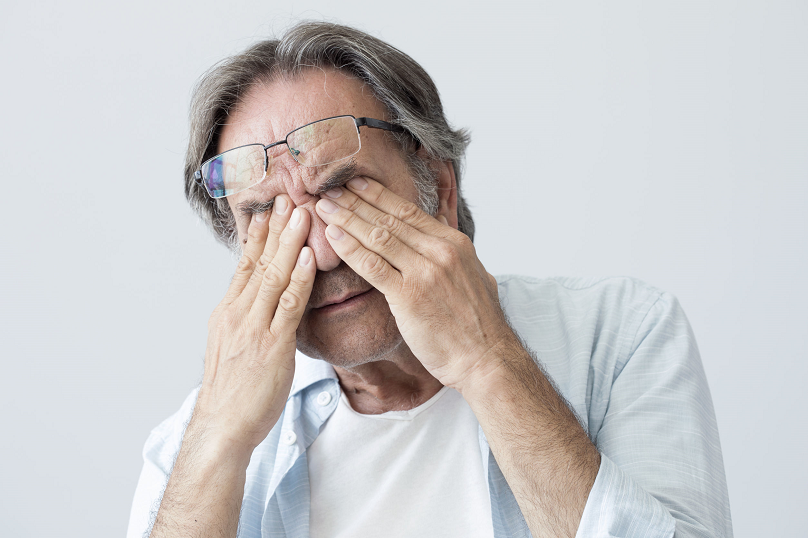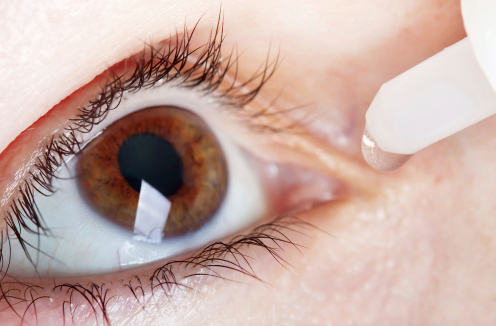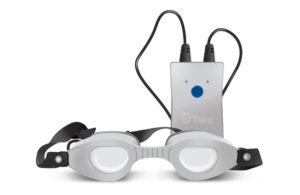Frequently asked questions about dry eye
Do your eyes feel sore or watery? Does reading or computer work make your eyes feel gritty and scratchy? If so, you may have dry eye syndrome.
Ever suffer from symptoms such as:
- Eyes feeling gritty
- Sensitivity to light
- Sore, stingy or burning eyes
- Blurred vision
- Eye redness
- Watery eyes
- Tired eyes?
 Eyes that are not properly protected by tears are vulnerable to dust, debris, and bacteria, leading to eye infections. Dry eye syndrome affects many people, and although it can develop at any age, it is more common amongst older people. Up to 30% of people in their 50s experience dry eye syndrome, and the condition becomes more common with age.
Eyes that are not properly protected by tears are vulnerable to dust, debris, and bacteria, leading to eye infections. Dry eye syndrome affects many people, and although it can develop at any age, it is more common amongst older people. Up to 30% of people in their 50s experience dry eye syndrome, and the condition becomes more common with age.
The good news is that it can be easily treated.
But firstly, what is dry eye, what causes it, how do you know you have it, and what can be done about it?
What is dry eye?
Dry eye is a condition that occurs when your eyes are not being sufficiently lubricated. Your eyes may be not producing enough tears, or the tears you do have may not be oily enough to lock moisture in, so the water in your tears evaporates too quickly.
Dry eye may also be caused by oil glands getting clogged and inflamed.
What causes dry eye?
Sadly, simply getting older may be the cause of dry eye, as we naturally produce fewer tears as the years go by. However, external factors such as wind exposure, air-conditioning, smoke, dust, dry heat and low humidity may also cause dry eye. As can prolonged computer use, which can lead to less frequent blinking and replenishing of tears. Medications, alcohol and caffeine can also be contributing factors.
How do you know you have dry eye?
Dry eye symptoms may include redness, itchiness, eye fatigue grittiness, stinging, blurry vision, and an annoying feeling that there is something stuck in your eye. Contact lenses can become more uncomfortable to wear, and night-time driving may also become more difficult. Oddly enough, watery eyes are another symptom caused by the eyes’ efforts to re-hydrate themselves, even if the tears evaporate too quickly to be of any help.
The symptoms can worsen as the day progresses. Lack of tears can lead to an increased risk of infection and, in severe cases, progressive eye disease, such as ulceration of the corneas.
What can be done about dry eye?
Most importantly, dry eyes should not go untreated. Taking care of dry eye not only relieves discomfort, it can help avoid infection or even scarred corneas. After a thorough diagnosis, where we will ask you about and underlying health challenges, medications or lifestyle, one of our optometrists may suggest using eye drops to help lubricate your eyes and decrease inflammation on the cornea.
 Our optometrist can prescribe artificial tears. Lubricating eyedrops such as Optimel Manuka Honey Eyedrops can refresh the eye, relieving the symptoms of dryness. Traditionally, manuka honey has been used to combat bacteria and reduce inflammation. Due to the inflammatory nature of dry eye, manuka eye drops are an effective treatment for dry eye disease, supporting healing and preventing further damage. It may be suggested you use these in conjunction with lubricating eye drops such as Lumecare Singles Eye Drops. The drops replace tears, while providing your eye surface with the electrolytes it needs.
Our optometrist can prescribe artificial tears. Lubricating eyedrops such as Optimel Manuka Honey Eyedrops can refresh the eye, relieving the symptoms of dryness. Traditionally, manuka honey has been used to combat bacteria and reduce inflammation. Due to the inflammatory nature of dry eye, manuka eye drops are an effective treatment for dry eye disease, supporting healing and preventing further damage. It may be suggested you use these in conjunction with lubricating eye drops such as Lumecare Singles Eye Drops. The drops replace tears, while providing your eye surface with the electrolytes it needs.
If appropriate, our optometrists could recommend the application of Optimel Antibacterial Manuka+ Eye Gel to lower lid margins. Topical antibiotics can significantly help reduce bacteria in cases of chronic lid disease.
But wait … there could be more

Dry eyes, which then become very watery, sore and inflamed, could be symptoms of blepharitis. Blepharitis is a very common eye disorder that affects the area of the eyelid where the eyelashes grow.
It is characterised by inflammation (redness) of the eyelid margins and sore eyes (especially in the morning) along with itchiness and irritation of the eyelids. It is caused when the oil glands that line the eyelid don’t function as they should, so they tend to produce too much oil. You may get waxy, greasy scales building up on the eyelid margins or unstable tear film, resulting in red, irritated eyes.
Blepharitis does need to be treated by an optometrist, not only to ease the soreness, but to prevent it getting a lot worse. It can be very uncomfortable, but it isn’t contagious and permanent damage to eyesight is rare.
For patients at our Auckland city optometrists, we have Blephasteam Goggles to warm the eyelid, unblock the oil glands and improve tear quality. These electric goggles are great for treating dry eye and blepharitis. Our optometrists can let you know if using Blephasteam treatment would be helpful for you.
What can you do to prevent and treat dry eye syndrome?
-
Eye hygiene
It is very important to clean your eyes and eyelids every day. Good eyelid hygiene not only relieves dry eye symptoms, it is the most important part of treating it. The aim is to soothe the eyelids, unplug any blocked meibomian glands and clear out any stagnant oily secretions. This daily routine consists of three parts: warmth, massage and cleansing with a gentle, pH-balanced cleansing solution. We recommend an eyelid cleanser such as Sterilid.
-
Nutrition
A healthy diet is essential for maintaining optimal health, all round. Omega 3 fatty acids have been shown to help maintain good vision and eye health and help relieve dry eyes symptoms. Fish and flax are good natural sources of Omega 3 fatty acids, used by the oil glands in our eyelids to make the oily layer of tear film.
We sell Thera Tears Nutrition Omega-3 Supplement Easy Swallow Capsules, supplements specifically made for dry eyes. These contain fish and organic flaxseed oil for their omega 3 content, and vitamin E which acts as an antioxidant. Speak to one of our opticians about how they could help both your eyesight and your well-being.
-
Blink a lot
With each blink of the eyelids, tears spread across the front surface of the eye. Tears provide lubrication, reduce the risk of eye infection, wash away foreign matter in the eye, and keep the surface of the eyes smooth and clear. If you’re in front of screens, remember to blink.
-
Remember the 20/20/20 rule
During prolonged computer or digital device use, make sure to take a short break every 20 minutes to look at an object 20 feet away for 20 seconds.
-
Keep hydrated
Drink enough water. Insufficient water intake can directly contribute to a reduced supply of tears, particularly when it’s hot and dry, or you’re jn air conditioning. Consider increasing the humidity in the air at work and at home through a humidifier.
Change your view on dry eye syndrome
Our Auckland optometrists specialise in treating dry eye. Between our Henderson Optometry practice and our optometrists in Newmarket our staff has dedicated over 35 years’ helping dry eye patients enjoy more comfortable lives. We offer an in-house treatment which is very effective at clearing the glands and returning your eyelids to normal function and we can show you how you can maintain a treatment plan at home for good eye health. Call 09 522 1283 or 09 836 1731 to schedule a comprehensive eye check and treatment plan.

